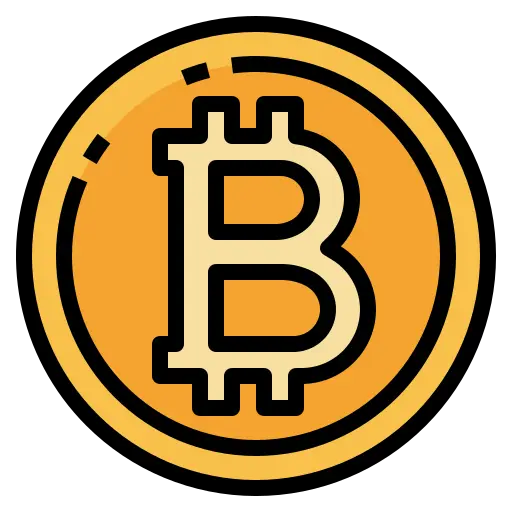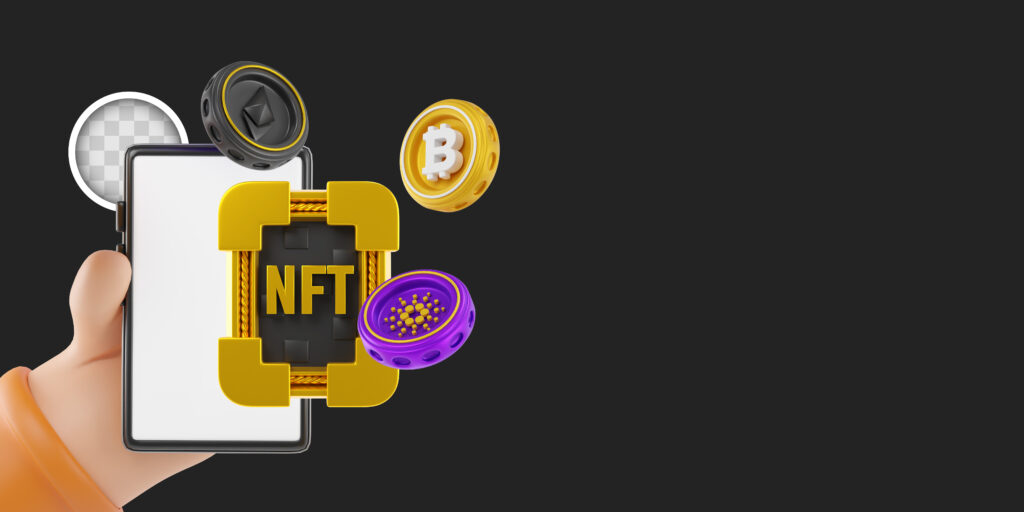The advent of Non-Fungible Tokens (NFTs) has sparked one of the most transformative changes in the digital space, especially in the context of the Web3 world. The internet as we know it is undergoing a redesign thanks to NFTs, which is changing the digital economy in fundamental ways, including ownership, creation of content, and engagement with the internet. In a decentralized Web3 world that is rooted in blockchain technology and gives power to the users, NFTs are emerging as a backbone that allows users to own digital properties, partake in decentralized economies, and inhabit virtual realms.
We will analyze in this article the ways through which NFTs are advancing and accelerating the evolution of Web3 ecosystems and how they are changing the dynamics of gaming, digital art, and social interaction in the virtual world.
What Are NFTs?
NFTs Defined
Through a blockchain, Non-Fungible Tokens (NFTs) are digital representations of assets that confirm possession of a specific item or content. Unlike cryptocurrencies like Bitcoin or Ethereum, which are fungible and interchangeable with one another, NFTs are individually distinct and cannot be bartered for another token of equal value. NFTs derive their uniqueness and digital value from the distinctiveness they wield.
Blockchain and NFTs
As an NFT is based on blockchain technology, it ensures the ownership, scarcity, and the history of the digital asset is tracked and recorded securely. Although Ethereum is still the most popular blockchain for NFTs, there is Solana, Polygon, and Flow that also serve as growing hubs for the creation and trading of NFTs.
NFTs Enabling Digital Ownership in Web3
True Ownership of Digital Assets
By means of NFTs, users can now access and own unique digital items such as art and music, collectibles, virtual real estate, and in-game assets. Ownership of such items was virtually impossible, especially with the creation of the internet as digital assets were stored on a central server and could be replicated and stolen. The blockchain ensures proof of ownership.
Verified Scarcity: Each NFT incorporates its own unique features distinguishing it, thus providing the users the assurance of authenticity. The assurance granted by blockchain technology raises the value of the item.
User Control: Users are in direct control of their NFTs and can trade, sell, or transfer the ownership without intermediaries hindering the process or taking a share.
Promotion of Ownership in Different Sectors
People are able to have custody of their data and assets in web3, and this is currently achievable through NFTs. NFTs allow for integration with other assets in the web3 universe. A good example is the use of pendant NFTs in games, where they could be utilized in several metaverse universes.
The Creation of NFT Based Decentralized Market Places
NFT Marketplaces
The use of NFTs has sparked the development of decentralized marketplaces where digital assets are traded with ease. Trade is conducted on a global scale in a more agile manner since marketplace users can transact freely using blockchain networks, which enables a shift from eBay and Amazon-like controlled environments to more open peer-to-peer ecosystems.
Customers are now able to mint, sell, and purchase NFTs on Platforms, which include OpenSea and Rarible. In the last few years, these platforms have served countless authors, innovators, and buyers interested in the free digital marketplace devoid of middle man manipulations.
NFTs have simplified the sale of products by providing sellers the chance to transact directly with buyers. In addition, they ensure that creators are paid each time their product is sold with the ability to earn royalties in the form of NFTs. This ease enables people to qualify for passive income that is unheard of from more conventional media industries.
Advantages of Decentralized Marketplaces
Reduced Costs: In decentralized NFT markets, there are no intermediaries. As a result, transaction costs are in most cases lower.
Worldwide Reach: NFT marketplaces are global in scope, which provides a market for creators.
Control and Ownership: With NFTs, buyers are enabled to unlock true ownership of digital assets by holding them in their personal wallets, bypassing the need for a centralized guardian.
NFTs in the Metaverse
The Metaverse and NFTs
The Metaverse is a relatively new digital space where users are able to engage and interact in a variety of digitally-connected activities and environments through avatars. NFTs play an important role in the metaverse by enabling the ownership of digital assets such as clothing, virtual land, and even one-of-a-kind activities.
Virtual Real Estate: Decentraland and The Sandbox are examples of platforms that let users purchase, sell, and develop virtual land, and even trade them as NFTs. As the metaverse advances, virtual land is becoming one of the most valuable commodities where users buy real estate to construct virtual homes, stores, and even event spaces.
Assets In Games: Many Web3 games are incorporating NFTs for in-game assets. Players are able to buy, trade, and sell unique in-game assets like weapons, skins, and characters that hold value beyond the game.
Digital Identity and Social Interaction
Users can now create a digital identity within the Metaverse thanks to NFTs. Users can now depict their social standing, taste in art, and even their digital persona. In addition, NFTs enables individuals to take part in virtual social interactions, concerts or events and express themselves in novel ways in the metaverse.
NFTs and Decentralized Finance (DeFi)
NFTs as Financial Instruments
One of the key ways NFTs are driving the Web3 ecosystems is the relationship NFTs have with DeFi. DeFi, which permits users to obtain a loan without an intermediary, is starting to adopt NFTs as loan collateral.
NFT Collateral: A few DeFi systems permit users to take out a loan based on the collateral of their NFTs. For instance, an individual with NFT digital art with good market value can take a loan on a decentralized borrowing platform using the NFT as collateral.
Staking and Yield Farming: Users holding NFTs can also be paid by some DeFi services on the condition that they stake their NFTs. These users may also participate in yield farming, which is the practice of earning rewards by supplying liquidity to a platform.
NFTs: Supporting Digital Art and the Creator Economy
NFTs in the Art World
The introduction of NFTs is transforming the art world as they open revenue streams for digital creators to market their work to buyers. This is a shift in the paradigm of the art world since it eliminated galleries and auction houses which served as middlemen for sales.
Authenticity and Ownership: NFTs provides a foolproof way to ascertain digital art as authentic and forensically verifiable in terms of ownership. Artists are able to imprint their signature in the form of smart contracts, confirming that each item is an authentic copy.
Royalties: Artists are able to automatically receive royalties on secondary sales of NFTs. This ensures a percentage of the sale price is returned to the artist upon resale, something that has not been available in the world of digital art.
The Rise of the Creator Economy
NFTs facilitate the creator economy, a business model where individuals can monetize their work, for NFT and NFTgates. This is a boon to the influencers, creators, and musicians as they can now issue exclusive content, digital memorabilia, and even limited edition work.
NFTs and Engaging the Community in Web3
Complex Governance Systems Involving DAOs and NFTs
NFTs are transforming governance in community-led ecosystems. DAOs, or Decentralized Autonomous Organizations, are communities where decisions are made through consensus and NFTs can serve as membership tokens.
NFT Memberships: Some DAOs use NFTs as membership cards which empowers holders with governance participation through voting. To some extent, these NFTs serve as badges of honor in the community and afford users the opportunity to help shape important aspects of the projects they wish to support.
Content that is not Publicly Available
NFTs serve to provide restricted access to some forms of content, events, and experiences in the Web3 world. Some of these may be virtual concerts and private communities.
Enhancing Engagement with Fans: NFT technology provides a powerful tool for artists, brands, and athletes wishing to reward their fans or provide them with exceptional access to information that develops a more intimate relationship.
FAQs: How NFTs Are Powering Web3 Ecosystems
Q1: What is an NFT?
An NFT (Non-Fungible Token) is a unique digital asset stored on the blockchain, representing ownership of a specific item such as art, music, or virtual goods.
Q2: How do NFTs power Web3 ecosystems?
NFTs provide ownership and authenticity, enabling decentralized marketplaces, gaming, and digital economies. They also enhance digital identity, governance, and community engagement in Web3 platforms.
Q3: Can NFTs be used as collateral in DeFi?
Yes, NFTs are increasingly being used as collateral in decentralized finance platforms, allowing users to secure loans against their NFTs.
Q4: How do NFTs affect the gaming industry?
NFTs allow players to own, trade, and sell in-game items and virtual assets, creating new opportunities for players to monetize their gameplay and interact in the digital economy.
Q5: What is the role of NFTs in the Metaverse?
In the Metaverse, NFTs represent virtual land, avatars, digital assets, and even experiences, enabling users to own, trade, and create in virtual worlds.



